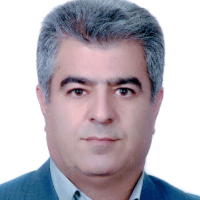Distribution of Potentially Toxic Elements in the Tailings, Mine and Agricultural Soils around the Irankuh Pb-Zn Mine, SW Esfahan
Author(s):
Article Type:
Research/Original Article (دارای رتبه معتبر)
Abstract:
Introduction:
Pollution of soils with potentially toxic elements (PTEs) is one of the most important hazards threatening the health of natural ecosystems. In recent decades, the anthropogenic activities have led to the disruption of the geochemical and biochemical circles of these elements. Mining activities are one of the most important anthropogenic sources for PTEs. The mine tailings are the most important pollution sources of surrounding soils and groundwater (Ferreira da Silva et al., 2004; Boularbah et al., 2006). Indeed, agricultural activities have a significant impact on the soil pollution with PTEs (Keskin, 2010). Soil plays a vital role in human life. Thus, the monitoring and assessment of soils pollution is of great importance. The Irankuh Pb-Zn mine, located in the SW of Esfahan, is one of the most important mines of Iran. Mining and subsequent processing of ores in this region generates high volumes of mine wastes which are deposited near the mine site. On the other hand, agricultural activities in the Irankuh area are extensive and the mine's tailing ponds usually neighbor the farms. The present study aims to investigate the concentration, mobility and availability of PTEs in the Irankuh mine tailings and to determine the source of these pollutants in the surrounding soils.
Material and Methods:
After the preliminary field studies, 28 soil samples including 8 mine- and 20 agricultural soils as well as two representative tailing samples were collected. One manure sample was also collected to identify the impact of agricultural activities on the concentration of PTEs in the soils, if any. First, the soil samples were air-dried at room temperature. Then, the large fragments and plant residuals were removed from the samples and the remaining portion was passed through a 2 mm stainless steel sieve. The sieved samples were ground to about 0.074 mm using an agate mortar and pestle and finally stored in polyethylene bags prior to laboratory analysis. The total concentrations of elements were measured by ICP-OES instrument after digesting by strong acids. The five-stage method of Tessier et al. (1979) was employed for sequential extraction analysis. In order to assess the pollution of the soils and tailings, the enrichment factor was calculated. Having obtained the results of the analysis, descriptive and multivariate data analyses were conducted.
Results and discussion:
The average concentration of Ag, As, Ba, Cd, Co, Mn, Pb, Sb and Zn in the mine soils are higher than the agricultural soils. The application of manure to the agriclutural soils led to increase in Cu and Cr concentration of the soils; the high concentration of these two elements in the manure sample is indicative. The concentration of Ag, As, Cd, Ba, Pb, Ni, Zn and Sb in both agricultural and mine soils are higher than the average world soil composition (Kabata-Pendias, 2011), pointing to the impact of anthropogenic activities on the PTEs concentrations in the soils. The tailing samples are highly encirched with respect to As, Cd, Cu, Sb, Mn, Pb and Zn. Enrichment factor values confirms pollution of soils with respect to Ag, As, Cd, Pb, Sb and Zn. Tailing samples are also extremly contaminated by these elements. On the basis of the analysis of variance, there is a significant statistical difference between the element concentrations in mine and in agricultural soils. The cluster analysis indicates the impacts of mining activity on the PTEs concentrations in soils. On the basis of principal component analysis, the elements originate from three sources: 1- geogenic stable elements 2- anthropogenic elements and 3- the weathering products of carbonate units. Total concentrations of PTEs provide no information on their likely environmental impacts. The speciation studies through sequential extraction analysis could be used to determine the mobility and availability of PTEs. By employing sequential extraction procedure, it is possible to predict occurrence manner, mobility, solubility, bioavailability, toxicity and transport as well as the origin of PTEs (Favas et al., 2011). The results show that, on the average, 24.9, 20.3, 18.6, and 15.2 % of Cu, Mn, Cd and As, respectively, are present as exchangeable fraction. Therefore, the weathering of mine tailings may increase the bioavailability of these elements in agricultural soils and groundwater around the mining area. The mobility of arsenic and iron is lower than other studied elements. Chromium and nickel are not mobile.
Acknowledgement:
This research has been funded by the Research Office of the Shahrood University of Technology.
Keywords:
Language:
Persian
Published:
Journal of Economic Geology, Volume:10 Issue: 2, 2019
Pages:
537 to 560
magiran.com/p1927938
دانلود و مطالعه متن این مقاله با یکی از روشهای زیر امکان پذیر است:
اشتراک شخصی
با عضویت و پرداخت آنلاین حق اشتراک یکساله به مبلغ 1,390,000ريال میتوانید 70 عنوان مطلب دانلود کنید!
اشتراک سازمانی
به کتابخانه دانشگاه یا محل کار خود پیشنهاد کنید تا اشتراک سازمانی این پایگاه را برای دسترسی نامحدود همه کاربران به متن مطالب تهیه نمایند!
توجه!
- حق عضویت دریافتی صرف حمایت از نشریات عضو و نگهداری، تکمیل و توسعه مگیران میشود.
- پرداخت حق اشتراک و دانلود مقالات اجازه بازنشر آن در سایر رسانههای چاپی و دیجیتال را به کاربر نمیدهد.
In order to view content subscription is required
Personal subscription
Subscribe magiran.com for 70 € euros via PayPal and download 70 articles during a year.
Organization subscription
Please contact us to subscribe your university or library for unlimited access!



